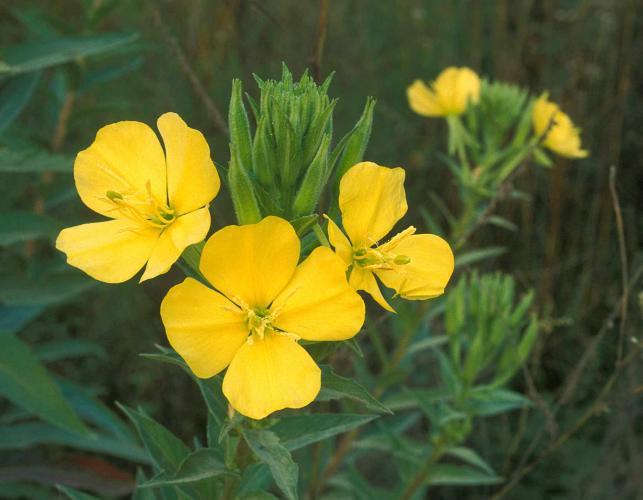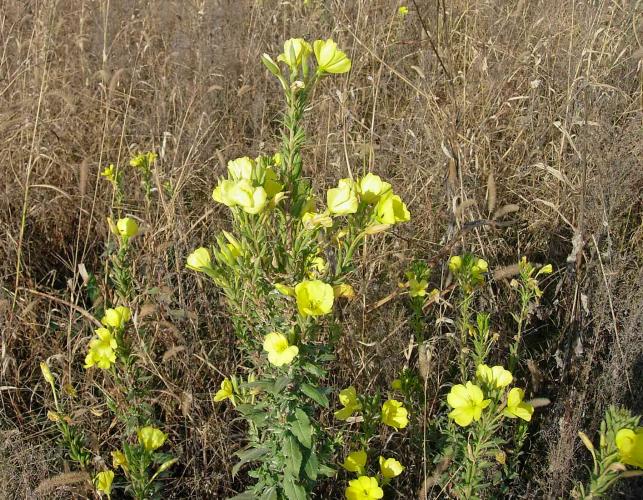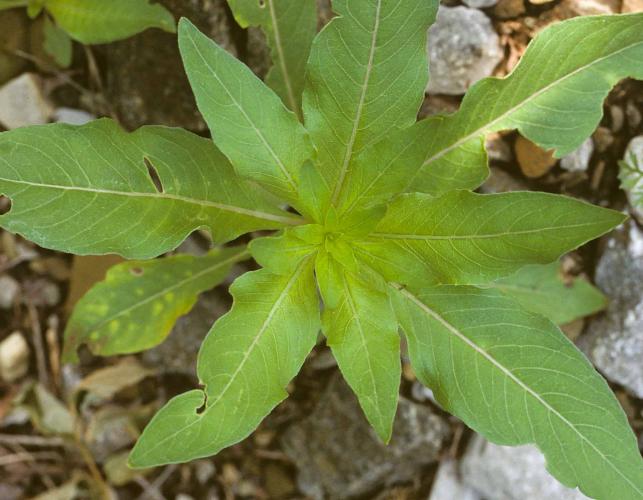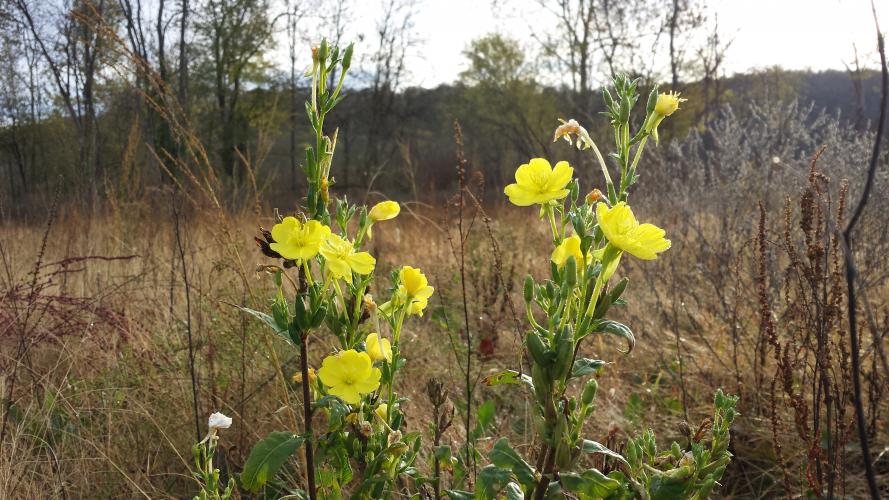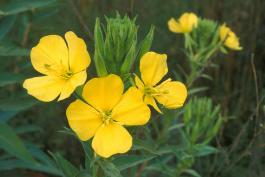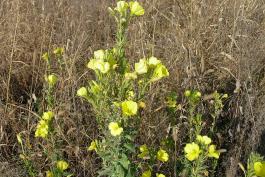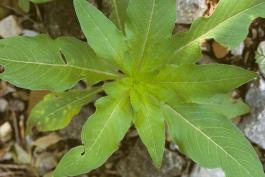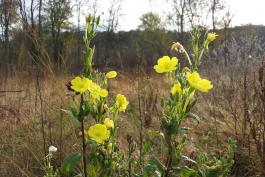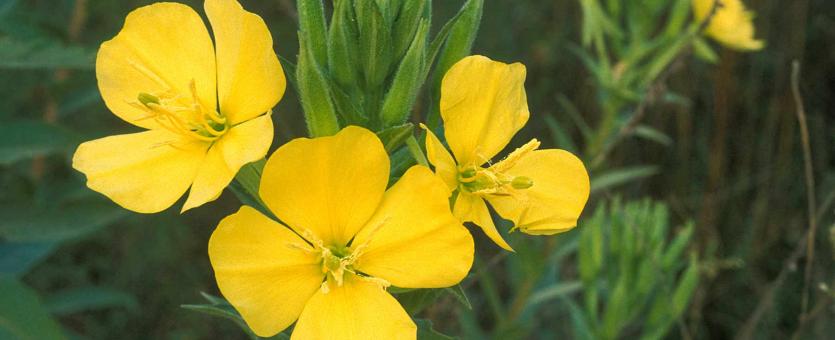
A robust, much-branched, leafy biennial, growing as a rosette of leaves the first year, and sending up a flowering stalk, then dying, the next. Flowers several to many in terminal racemes, light yellow, 4-petaled, subtended by narrow, recurved bracts. The petals are rounded. Blooms June–October. Leaves alternate, sessile or with very short petioles, lanceolate, light green, with insignificant teeth or without, to 6 inches long.
Similar species: Missouri has about 22 species of Oenothera. This is the most common and widespread of them, and it is very variable in form.
Height: to 6 feet (including the flowering stalk).
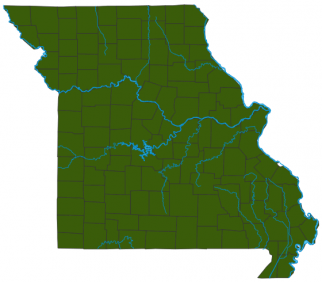
Common statewide.
Habitat and Conservation
Openings and edges of upland forests, edges of bottomland forests, glades, bluffs, prairies, marshes, sand prairies, banks of streams and rivers, ditches, pastures, fields, mine spoils, gardens, railroads, roadsides, and other open, disturbed areas. It is most noticeable late in the season, when it reaches its greatest height and the flowers at the top are most visible. Like other evening primroses, this species usually opens its flowers in the evening and subtly perfumes the night air.
Human Connections
Many people cultivate this plant in their gardens, and horticultural selections with much larger flowers are being developed. Oils from this species have been, and still are used for a variety of medicinal applications. Young leaves and first-year roots can be cooked and eaten.
Ecosystem Connections
Like most other night-blooming plants, night-flying animals are the chief pollinators. In this case, it is moths, especially sphinx moths. On cloudy mornings, when the flowers stay open, hummingbirds and bees and other insects visit, too. Several moth caterpillars and other insects eat the leaves.
